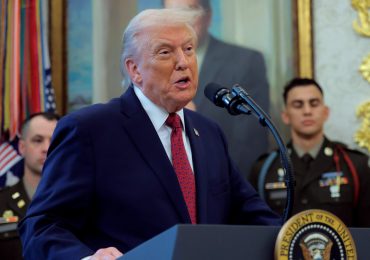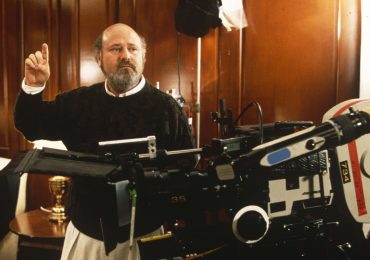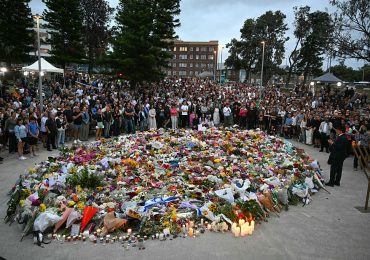The “times” we live in now are challenging, yet familiar. They are marked by division, fear, and uncertainty—but also by an enduring potential for hope and transformation.
Dr. King famously said, “Evil and fear have within them the seeds of their own destruction,” a truth that Amb. Andrew J. Young recently reminded me of. Fear has always attempted to step into the void, yet hope has consistently risen to meet the challenge. This is the through line of our history—a testament to our nation’s resilience and capacity for renewal.
[time-brightcove not-tgx=”true”]
We have been here before. In the 1960s, the assassinations of Dr. King, Malcolm X, Robert Kennedy, and John F. Kennedy tore at the soul of America. The loss of these leaders created a vacuum of hope, yet the Civil Rights Movement persisted. Out of those tumultuous times came significant progress—the Civil Rights Act, the Voting Rights Act, and the eventual recognition of Dr. King’s birthday as a national holiday. But this progress was not inevitable; it was forged through struggle and the determination to rise above fear and division.
The 1860s offer another example. The Civil War represented the ultimate fracture of our nation, but it also planted the seeds of a new beginning. Abraham Lincoln, a Republican president, ran on an anti-slavery platform (in actually, it is an oddly little known fact that the Republican Party was itself born on an anti-slavery, social justice platform in 1854, in response to the Kansas-Nebraska Act which sought to expand slavery into territories previously prohibited. This was classic social justice leadership work, circa 1850s), setting the stage for the Emancipation Proclamation and the Thirteenth Amendment. Nearly a century later, President Lyndon B. Johnson, a Democrat, faced an often unsupportive Congress (from Democrats and Republicans alike) to push through the Civil Rights Act and the Voting Rights Act. These leaders, though from different eras and political parties, shared a commitment to justice and unity that transcended partisanship.
The arc of history is long, as Dr. King observed, but it bends toward justice—but not without the efforts of individuals willing to work together. Even in moments of retrenchment or seeming reversal, progress has found a way.
Consider the trajectory of affirmative action. After Dr. King’s assassination, the fight for affirmative action shifted focus from African Americans to women or, at times, to nothing at all. Yet, unexpected leaders emerged to carry the torch. President Richard Nixon, often remembered for his political conservatism, formalized affirmative action policies, championed environmentalism, and advanced women’s rights. Similarly, President Ronald Reagan, working with the King family and cultural icons like Stevie Wonder, signed legislation to establish the MLK holiday.
Who could have predicted that these leaders, from different ends of the political spectrum, would contribute so meaningfully to the cause of justice?
This spirit of bipartisanship and collaboration has been a hallmark of American progress. George H.W. Bush recognized my work in underserved communities, working with the Mayor Tom Bradley of Los Angeles, Calif. (a prominent Democrat of that time), awarding me a foundational grant of $61,000 to establish Operation HOPE following the Rodney King Riots of 1992. Later, he joined forces with President Bill Clinton to address the aftermath of Hurricane Katrina. His son, President George W. Bush, worked with me to make financial literacy a federal policy and achieved historic advancements for Africa. And President Barack Obama’s administration, at my request and under Treasury Secretary Jack Lew and Wally Adeyemo, renamed the U.S. Treasury Annex Building as the Freedman’s Bank Building—a powerful symbol of Lincoln’s vision for economic equity.
Read More: How Americans Can Tackle Political Division Together
These stories remind us that we all need each other. This has been the enduring truth of our nation’s journey. When we work together, we achieve not just good things but great things. We transcend the limitations of our individual perspectives and create solutions that endure.
This is not just history; it is a call to action for the present. In 2025, we must recommit to the table of brotherhood that Dr. King and civil rights activists envisioned. We must sit down with those we disagree with, not to argue but to listen and find common ground. A commitment to “expand the table and add a seat,” to quote my friend Stephanie Ruhle. Our children and grandchildren deserve nothing less than a world built on hope, not fear. As human rights activist Dr. Dorothy Height often said, we need “leaders and dreamers with shovels in their hands”—ready to do the work of building a better future and a ladder of opportunity for us all.
Dr. King’s dream was not just about the decency we show each other. To disagree, without being disagreeable. These values remain as relevant today as they were in 1963. They challenge us to look beyond our differences and focus on our shared humanity.
As I reflect on these lessons, I am reminded of a question I was once asked: Would I go to dinner with Presidents Clinton and Bush? My answer was immediate. For President Clinton, it was “what time?” For President Bush, it was “what for?” But in both cases, my answer was yes. Because dialogue—even with those who see the world differently—is the first step toward understanding and progress.
The times we are in today demand that same openness, courage, and commitment to unity. Fear may knock at the door, but hope must answer. Division may tempt us, but collaboration must prevail. And when we work together—truly together—we can achieve the seemingly impossible.
Leave a comment








